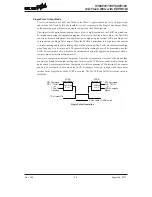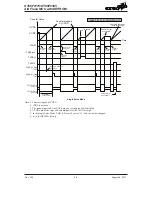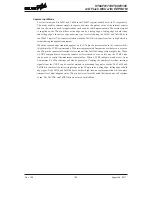
Rev. 1.50
10�
����st ��� �01�
Rev. 1.50
103
����st ��� �01�
HT66F0175/HT66F0185
A/D Flash MCU with EEPROM
HT66F0175/HT66F0185
A/D Flash MCU with EEPROM
Periodic Type TM – PTM
The Periodic Type TM contains five operating modes, which are Compare Match Output, Timer/
Event Counter, Capture Input, Single Pulse Output and PWM Output modes. The Periodic TM can
also be controlled with one external input pin and can drive one external output pin.
Device
TM Core
TM No.
TM Input Pin
TM Output Pin
HT66F01�5
10-bit PTM
TM0� TM1
TCK0� TCK1
TP0� TP1
HT66F01�5
10-bit PTM
TM1
TCK1
TP1
f
SYS
f
SYS
/4
f
H
/64
f
H
/16
f
TBC
TCKn
000
001
010
011
100
101
110
111
TnCK�~TnCK0
10-bit Co�nt-�p Co�nter
10-bit Comparator P
CCRP
b0~b9
b0~b9
10-bit Comparator �
TnON
TnP�U
Comparator � Match
Comparator P Match
Co�nter Clear
0
1
O�tp�t
Control
Polarity
Control
Pin
Control
TPn
TnOC
TnM1� TnM0
TnIO1� TnIO0
Tn�F Interr�pt
TnPF Interr�pt
TnPOL
TnCP
CCR�
TnCCLR
Ed�e
Detector
TnIO1� TnIO0
f
H
1
0
TnC�PTS
Periodic Type TM Block Diagram – n = 0 or 1
Periodic TM Operation
The size of Periodic TM is 10-bit wide and its core is a 10-bit count-up counter which is driven by
a user selectable internal or external clock source. There are also two internal comparators with the
names, Comparator A and Comparator P. These comparators will compare the value in the counter
with CCRP and CCRA registers. The CCRP and CCRA comparators are 10-bit wide whose value is
respectively compared with all counter bits.
The only way of changing the value of the 10-bit counter using the application program is to
clear the counter by changing the TnON bit from low to high. The counter will also be cleared
automatically by a counter overflow or a compare match with one of its associated comparators.
When these conditions occur, a TM interrupt signal will also usually be generated. The Periodic
Type TM can operate in a number of different operational modes, can be driven by different clock
sources including an input pin and can also control the output pins. All operating setup conditions
are selected using relevant internal registers.
















































